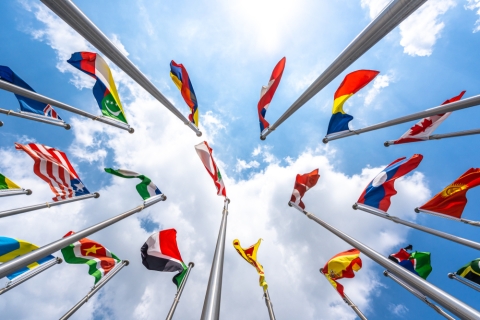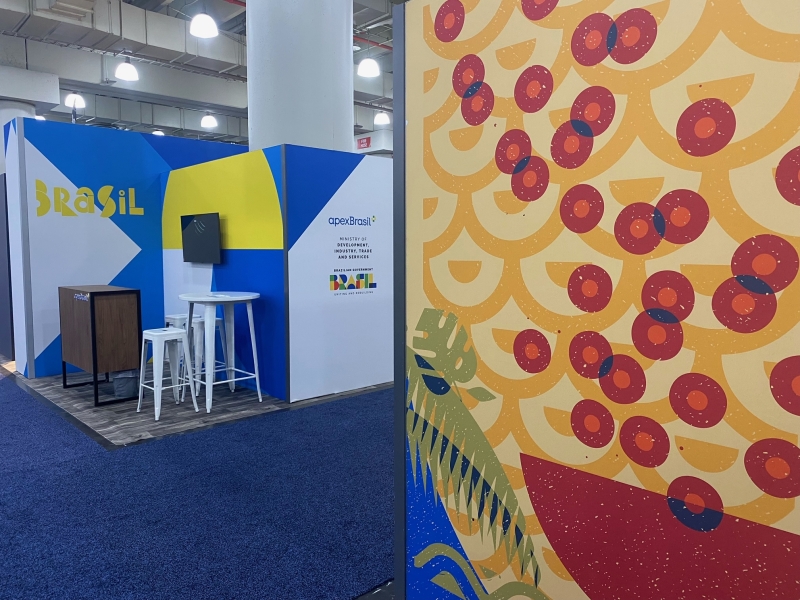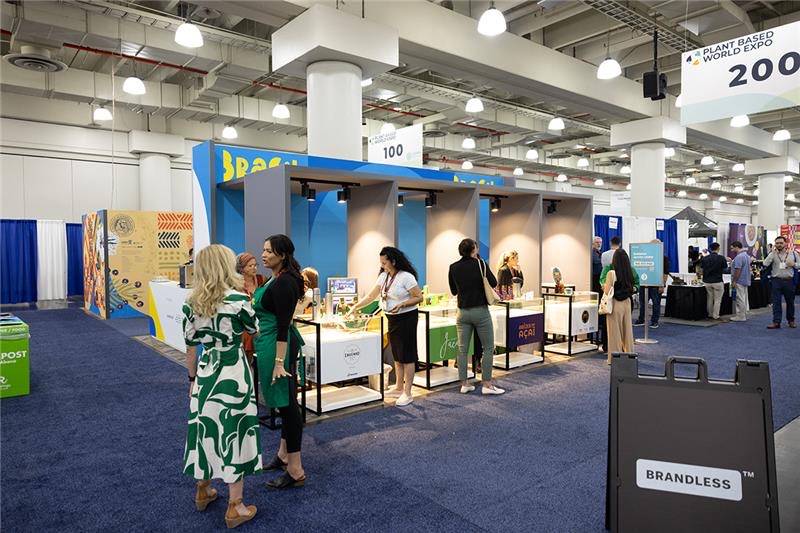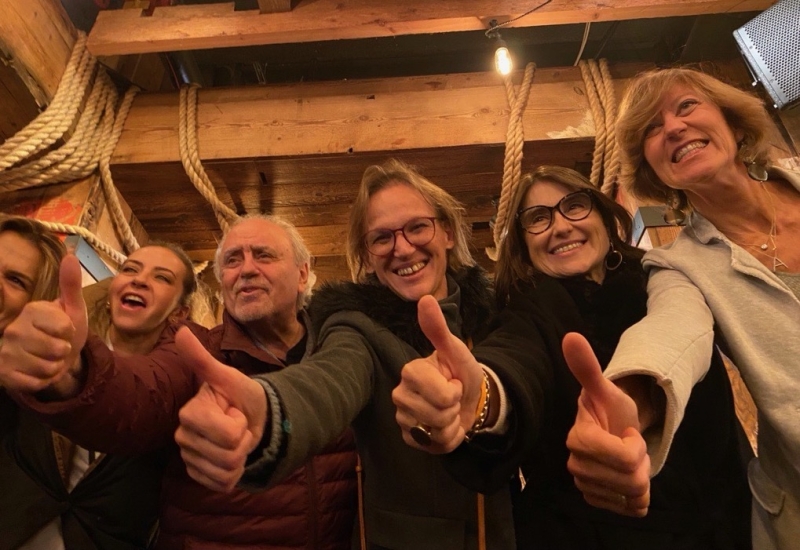International Participation in U.S. Trade Shows is Rebounding: What Organizers Need to Know Now

One of the fastest-growing segments of the trade show industry in 2024: international attendance and exhibitors. In fact, international travel to the U.S. is growing quickly, with volume expected to reach 98% of 2019 levels in 2024 (up from 84% recovered in 2023), according to the most recent data from U.S. Travel Association (USTA).
After international participation in U.S. trade shows flat-lined during COVID, event organizers, like Money20/20 and Plant Based World Expo, are capitalizing on the rebound by investing in attracting foreign companies to their U.S. events with international pavilions.
But the world of international pavilions is evolving, with more countries developing innovative programs to support small and midsized companies. By understanding these trends and challenges, organizers and participants alike can better navigate the complexities of global exhibitions.
TSNN delves into the current trends and strategies surrounding international pavilions, drawing insights from Cherif Moujabber, owner of Creative Expos and Conferences, a Walpole, Mass.-based company that has a long history of consulting with trade shows, like the Fancy Food Shows, CONEXPO-CON/AGG and the National Restaurant Association Show, to attract international exhibitors and attendees. We explored successful examples, challenges, and strategic advice for ensuring your company's success on the global stage.

Early planning, strategic matchmaking, and flexibility in commitments and payments will be key to maximizing the benefits of participating in international events. As the global marketplace continues to expand, these strategies will be essential in ensuring that companies of all sizes can compete and succeed.
Understanding the Key Players
To successfully secure a pavilion, Moujabber said event organizers need to focus on three primary entities:
- Industry Associations: These organizations represent your industry within a specific country. They are essential for networking and gaining industry support.
- Funding Authorities: Typically government bodies, these authorities provide the necessary financial backing to support export promotions. However, they are not always government-affiliated, so broaden your search accordingly.
- Sales Agents: These individuals specialize in coordinating between the industry associations and funding authorities. They are instrumental in negotiating deals and ensuring all parties are aligned.
Focusing on Small and Midsized Companies
Many governments create effective programs for small and mid-sized companies to export their products into new markets like the lucrative U.S. These companies often lack the resources to independently navigate international exhibitions, necessitating dedicated support programs. Some countries, like Brazil, have created specific initiatives aimed at these smaller firms, ensuring their participation and ability to compete on the global stage, Moujabber said.
Emerging Trends in International Pavilions
One trend that has been making organizers nervous is the increasingly late commitments from international participants. In the past, companies would confirm their participation months in advance. However, it’s now common for decisions to be made as little as three months before an exhibition. This trend demands a high level of flexibility from show organizers who need to keep prime spaces open and have faith that international companies will eventually commit.
Challenges of First-Time Shows
First-time shows face considerable challenges. They rarely attract international pavilions unless they cater to a very niche market that provides a unique advantage to the participating companies. Established shows in new countries also need to prove their credentials as organizing these events involves a significant effort to promote them locally and internationally.
The Brazilian Example

Brazil offers a notable example of innovation in supporting small- and mid-sized companies.
“The country's Apex funding authority rolled out a program two years ago aimed at helping new-to-market companies,” Moujabber explained. “Plant Based World Expo was the first recipient and beneficiary of the program in the western hemisphere.” Apex signed a five-year deal with Plant Based World Expo and brought 20 companies last year, he added.
The program offers subsidized participation, including covering costs like space and basic decoration while allowing these companies to be spread throughout the exhibition space rather than clustered in a pavilion.
Planning and budgeting
Preparation is crucial. Start your efforts 12-16 months before the show dates, advised Moujabber. This lead time accounts for budget cycles and bureaucratic procedures, ensuring all necessary approvals and funding are secured well in advance.

Governments typically decide by April which shows they will support in the following year, solidifying their list by September or October. This timeline underscores the importance of early engagement with local consulates and embassy authorities.
Budget constraints also play a significant role. Different sectors experience varying levels of funding based on yearly priorities and available financial resources. Organizers must be mindful of these timelines and budget dependencies to effectively engage and secure international participation.
Matchmaking and Strategic Meetings
An emerging focus is on matchmaking. International participants, especially small companies, seek opportunities to meet distributors, retailers, and other potential business partners. Organizers can facilitate this by setting up pre-show meetings and providing matchmaking services.
Flexibility and Late Payments
Given the late commitments, show organizers must be prepared to manage late payments. “It's crucial to maintain good space on the floor up to three months before the show, accommodating international participants who may finalize their plans later than domestic exhibitors,” Moujabber said.
Be Cautious of Unsolicited Requests
Pay close attention to unsolicited offers from overseas, particularly from Asia. While expansion into international markets is beneficial, do your due diligence and verify the credibility of outside sales agents requests to avoid potential pitfalls.

Leveraging Your Sales Network
A robust international sales network can significantly boost your trade show's appeal to global exhibitors. It provides a competitive edge by showcasing your capability to attract a diverse range of international pavilions.
Looking ahead
Growth opportunities will continue in the near term, as inbound international travel to the U.S. is still far from a full pre-pandemic recovery. Volume is predicted to achieve a full recovery in 2025, but spending levels, when adjusted for inflation, are not expected to recover until 2026, according to the USTA forecast released in January 2024.


Add new comment